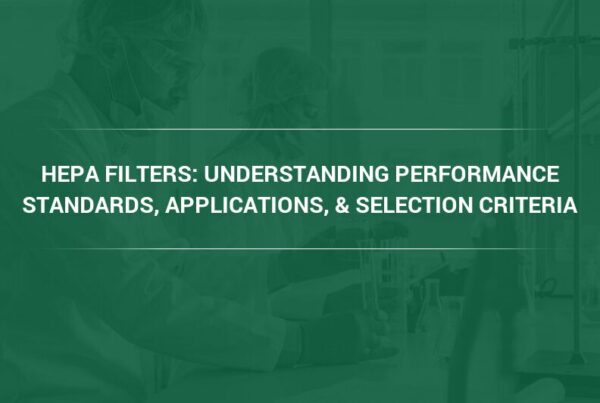Watch Google Hangout Related to HEPA Filters in Hospital Operating Suites http://youtu.be/NUxEJm7UTCY
You have had an incident, or one of those life-changing events that require you to be the person on the operating table in one of your local hospital’s operating suites. As you look around the room before the anesthesiologist does their job you notice all of the medical equipment used to ensure you have a safe and successful procedure. As you look towards the ceiling you note almost the entire ceiling is made of clinical-looking perforated grilles. What could be up there?
Above those grilles are HEPA filters, high efficiency particulate air filters, the most efficient filters available. Tested and confirmed for performance during manufacture, these filters have a minimum efficiency of 99.97% on particles as small as 0.3-micron, equivalent to 1/300th of the diameter of a human hair. This ultra-high efficiency, along with a high number of air changes to the space, ensures that airborne contaminants, including bacteria and pathogens, don’t contaminate your body when you are in a compromised position of internal organ exposure. The operating suite environment is also a very busy place that includes many personnel performing critical tasks. This ultra-clean environment also offers these employees protection from infectious transfer.
One of the principles of operating suite design is reducing the concentration of particles per unit volume, or the total numbers of particles per cubic foot to the lowest possible level. Particle volume per cubic foot is subsequently reduced for the entire room as particles, like gases and odors, tend to equalize throughout the space in a process known as diffusion — reduce the particles in one area, reduce the particles in contiguous areas. The increased air changes designed into these spaces is a huge factor as every time the room air is recirculated through the HEPA filters more particles are removed to make the concentration per unit volume lower assuring improved protection of the patient and room occupants.
According to the centers for Disease Control (CDC) 1 in 25 hospital patients suffer an infection caused while in medical care and 1 in 9 will die. Hospitals are under pressure to reduce hospital acquired infections (HAI) and can even suffer financial repercussions if their performance falls below industry benchmarks. Consumer trends also indicate that facilities are being chosen based upon published HAI data, a government requirement. Proper design and operation of these critical care areas is just one facet of ensuring that you are not on the negative side of this statistic.
Camfil publishes a brochure detailing some of the authoritative Standards, requirements and recommendations for air quality and filtration for healthcare facilities. Online copies can be downloaded from http://www.camfil.us/Industries/Hospitals–Medical-Facilities/.



